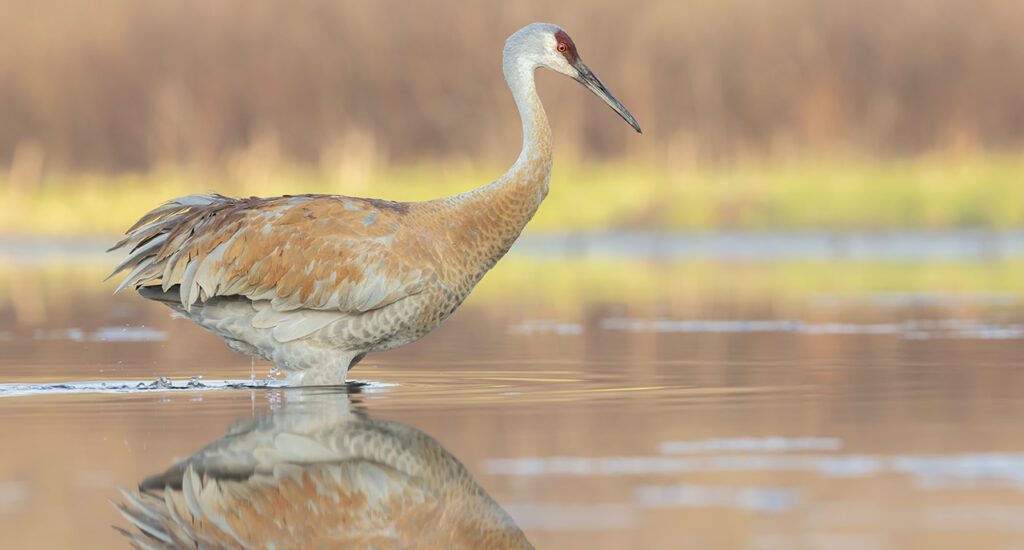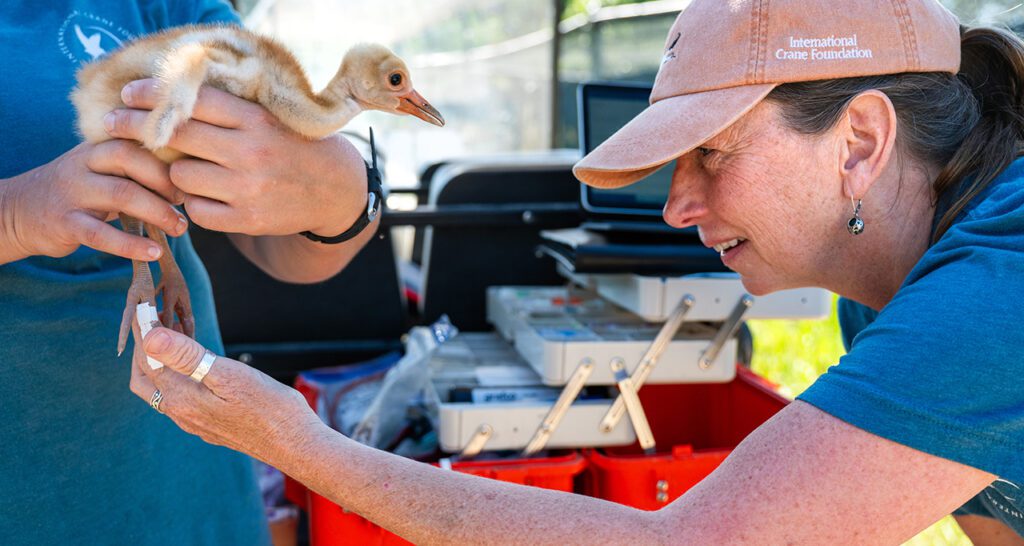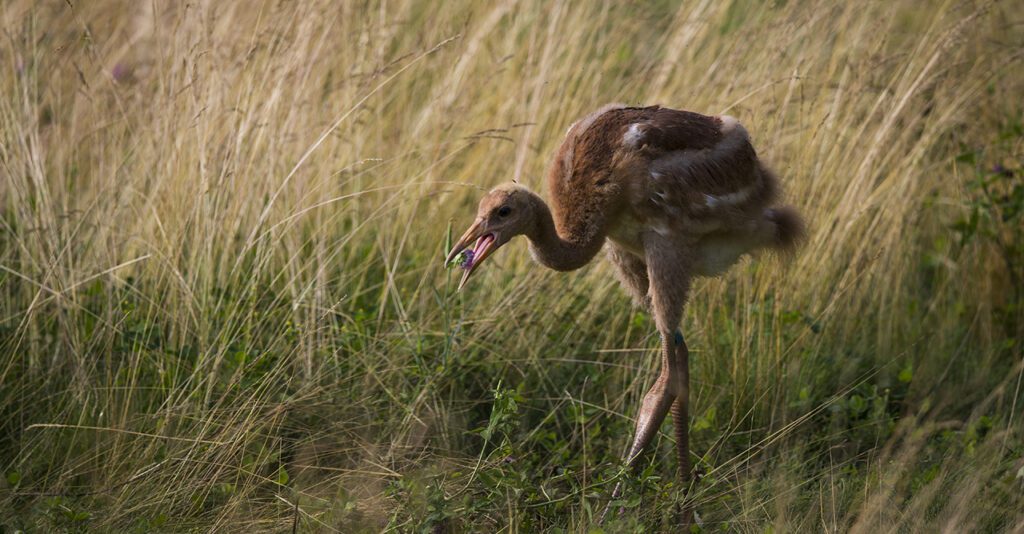Veterinary Partnership Making a Difference for Cranes
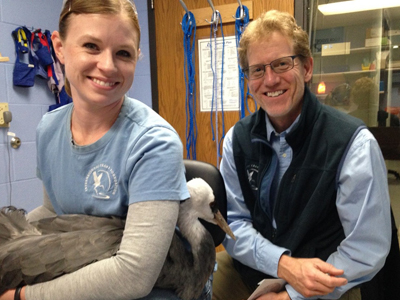
International Crane Foundation Aviculturist, Allyce Vogel, Belmont, and Dr. Hartup following Belmont’s ultrasound exam.
On a warm fall morning late last month we safely transported one of our Hooded Cranes, “Belmont,” one-hour south to the University of Wisconsin-Madison School of Veterinary Medicine. In early November, 18 year-old Belmont began exhibiting significant right leg lameness and knuckling of her foot, or walking on the tops of her toes, and we needed additional insight into why this was happening. The International Crane Foundation has had a Memorandum of Understanding with the School of Veterinary Medicine for 24/7 veterinary services since 2000. Most of this agreement is fulfilled by my position at the International Crane Foundation, but it also includes preferred access to the Special Species Service and other specialties at the University when needed.
With the School of Veterinary Medicine’s consultation, we completed a neurologic exam, a CT scan, and an ultrasound exam of Belmont’s legs. The tests showed the presence of advanced arthritis in the right tarsus joint (or hock, analogous to the ankle in humans), and decreased pliability of the tendons lower in her leg, but no other problems.

Ms. Savannah Lauer, a senior veterinary student at the University of Wisconsin, recently completed her six-week preceptorship in Avian and Conservation Medicine at our headquarters. During her preceptorship, Savannah moved along a helpful piece of research on the occurrence of osteoarthritis in our captive flock. Cranes are long-lived birds and may experience degenerative conditions like arthritis following traumatic injury to a limb, or simply develop these conditions later in life. Savannah helped update an inventory of historical cases from our flock – 38 so far – and conducted a limited analysis on potential risk factors.
The results indicate that the average age of the cranes was 22 years when their condition was diagnosed, and the occurrence of the condition was similar between females and males. Cases have been described in 12 crane species, 29% of the cranes had a history of a previous injury, and 55% of the cranes developed arthritis in more than one joint. We hope to publish these results in the coming year.
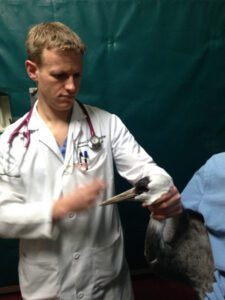
Belmont’s case represents a common progression of the disease in cranes following injury – 14 years in the making – and is reflected in the findings of this research. In 2002, as a 4 year-old, Belmont sustained a significant right tarsal joint injury that required nearly four months of care. At the time, she was the star of our flight show, a daily program during our visitor season for which she was trained to fly between two points to demonstrate a crane in flight. After her treatment and a period of healing, she was able to return to her flight show training.
After her exams last month at the School of Veterinary Medicine, we placed a supportive splint on Belmont’s leg, and she is on medication to relieve her discomfort. We are considering whether a tendon surgery can help in her case. We will keep you updated on her progress!

Story submitted by Dr. Barry Hartup, International Crane Foundation Director of Conservation Medicine.
